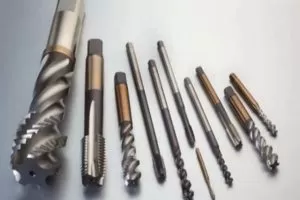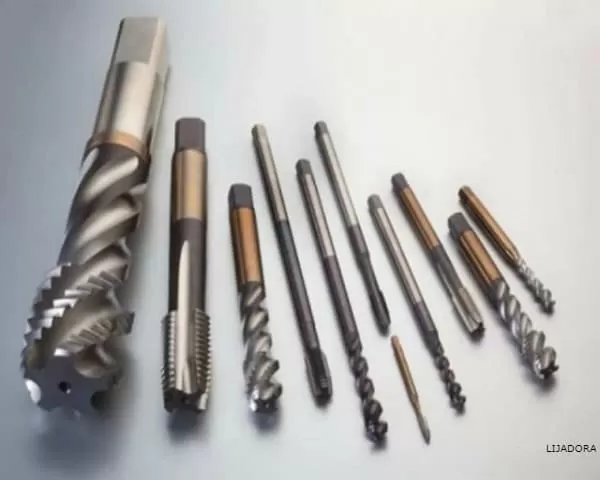What is a Drill Used For ?
The drill is a cutting part that is always used in conjunction with a mechanical tool called a drill or any other related machine. It can be used to make holes or perforations, drill metal, wood and other materials. Some are versatile and in turn one of them can be used to work with various materials such as those mentioned above.
Cutting Bits
The drills themselves are used for cutting, by means of perforations, lateral cuts as the spiral drill does, dry cut ceramic drills, plaster wall carrying drills, among others. They are used in different materials that exist such as wood, light metals, ferrous metals, rocks, ceramics, plaster, etc.
Wood Drills
There are many types of wooden drills, namely, bits, pallet drills, drill bits, or crown saws, among others. In addition, there are specials suitable for specific woodworking tasks.
Brad Point Bits
Brad point drills are also known as shank or W point drills. They can be recognized by the small dot at the end of the bit. The drill has spurs on each side of the point that are designed to cut clean, straight holes in all types of wood.
Drill Bits
Drills are used to make large, deep and precise holes in dry wood. They have spiral shafts that reach fine, threaded points.
Paddle Drills
Popsicle bits are also called wooden spade bits. These drills have a pointed tip that starts the hole. The shovel-shaped blade follows to drill a large, wide hole. With shovel tips, the size of the drill bit is usually indicated on the face of the paddle. Sizes vary from 6 to 38 millimeters in diameter.
Countersink Drills
- The countersink is not actually a genuine drill; however, it is used in power and hand drilling to shape the cone shaped recess of the countersunk screw heads.
- These drills are intended for use in delicate materials, e.g., wood and plastics, not metals. When used with an electric drill to countersink a hole, it tends to “chatter” and results in a hard surface.
- Some drills are less common and are considered special woodworking drills. Countersink drills are also used to drill a hole and cut a space for the screw head.
- Drill/Counterbore bits combine the drill bit and the countersink bit to provide an all-in-one solution for drilling holes for countersunk screws.
Wood Auger Drill
The Wood Auger drill is perfect for drilling large, deep holes in wood and large man-made boards. For the most part, a drill is used only as part of a hand wrench. These drills cut perfect, deep, flat-bottomed holes.
Torsional Drills
Generally referred to as drilling lathes, these are probably the most widely recognized drilling tools used by a one-handed maintenance personnel or an electric drill.
The leading edges cut through the material while the spirals remove debris from the hole and keep the tip straight. They can be used on wood, metal, plastics and comparative materials.
Using Metal Drills
Metal drills are also known as high speed steel (HSS) or twist drills. They are usually black in color and can be used for wood and plastic. While HSS drills can be used for drilling plastic and wood, wood drills should never be used for drilling metal.
Very Hard Metal Drills
When you are going to drill many holes or need to drill hard and abrasive metals such as stainless steel or cast iron, you need black oxide or a cobalt metal drill.
For rougher or harder metals (such as stainless steel), chrome/vanadium, cobalt or titanium carbide drills are ideal. HSS means that the drill is made of a harder metal.
Some drills also have a special coating called titanium nitride (TiN), which helps resist heat and friction better, making these drills last up to six times longer than standard high-speed steel drills.
When drilling stainless steel, it is best to use a cobalt alloy high speed steel (HSS-E) drill or drills that are coated with titanium. These are more expensive than conventional HSS drills, but allow you to drill in special steel without causing wear on the drill.
Metal Drill Diameter
To be sure of which hole we have to make, it is necessary to know the diameter of the drill to be used, depending on the measures and type of the thread. For the metric thread, we have that within “metric” we can distinguish two types of thread, which are the normal metric and the fine thread metric.
These are some metal drills with their respective diameter in inches and millimeters:
- 1/16″ (2mm)
- 3/32″ (2.5mm)
- 1/8″ (3mm)
- 5/32″ (4mm)
- 3/16″ (5mm)
- 7/32″ (5.5mm)
Wall Drill
These drills are used to drill bricks, stones etc. They have a reinforcement in the head that gives them a “shovel” shape since it is reinforced with a very hard material to increase its duration and guarantee its drilling capacity. Tungsten carbide plate laminated drill bit (widia). The body is laminated and is perfectly designed for plaster, cement, brick, uralite, sandstone and limestone.
High Performance Carbide Plate Milled Drill
The body is milled, and in addition to all the above materials, it can easily drill into marble, concrete, slate, granite and usually all types of stone. Its power of penetration and its duration is above the characteristics of the previous one.
Titanium Drills
Titanium coated drills produce less friction. They are stronger than basic HSS bits and stay in place longer. They work for drilling wood, metal, fiberglass and PVC.
Cobalt Drill
Cobalt drills are extremely hard and dissipate heat quickly. They are mainly used for drilling aluminum and hard metals such as stainless steel.
Concrete Drills
A masonry drill bit drills through hard materials such as concrete, brick, concrete and other masonry. Some work with a standard corded or cordless rotary drill, but those designed for use with a rotary hammer or hammer drill can drill masonry more effectively.
Bits that can drill through concrete or masonry are called masonry bits. They are also good for drilling brick and stone. Tungsten carbide tipped bits are the strongest; when it comes to solid concrete, the sharper the better. Masonry bits cut holes through concrete in two steps.
Tile Drills
The tile bit is used to drill ceramic or glass tiles and has a ground tungsten carbide tip. However, these drills can be used with a hand drill and are best used for drilling with speed, from inconsistent to moderate speed.
During the installation of ceramic tiles, the tile repairer must deal with situations where the best option is to use tile crown drills. The need to drill holes in ceramic tile for water supplies, drains, or electrical connections requires the use of wreath bits.
Solomon’s Drill Bits
The Solomonic drill is used to drill wood quickly and accurately. It is perfect for use in construction, carpentry and roofing activities. It is also used for soft and hard woods. The drill has a hexagonal insertion shank system and works with any drill with a 13 mm chuck
Drill Marks
- DRY
- KOMET
- ALFRA
- INGERSOL
- SUPERTEC
- SUMITOMO
- KENNAMETAL
- CERATIZIT
- CARMON
- BETA
- BOSCH
- GOEBEL
- SML
- GREENLEE
- MAKITA
- FRAISA
- UMA
- MIKRON
- WALTEA
- MAPAL
SDS Drills
SDS drills, which are different from conventional drills, have a direct entry, different in thickness and design, which in turn provides better performance than conventional drills because they allow for higher speeds.
HSS Drills
High Speed Steel (HSS) drills can drill wood, fiberglass, PVC (polyvinyl chloride) and soft metals such as aluminum.
HSS-E Drills
The HSS-E drill is a high performance cobalt alloy drill. Even with insufficient cooling it has a reserve in heat resistance. Due to the addition of 5% Co alloy in the cutting material, these drills can be used to work with workpieces with a tensile strength of more than 800 N/m².
Widia Drills
These are drills composed of a shank and a tungsten carbide tip (widea) that are similar in shape to a spearhead. It is used to drill glass, ceramics, tiles, porcelain, mirrors, etc.
Sandvik Drills
Sandvik is an engineering group in mining and rock excavation, metal cutting and materials technology. Sandvik designs are known and widely used all over the world. Regardless of the conditions they encounter, these tools make the work more efficient and easier.
They are equipped with Sandvik’s patented cemented carbide buttons, which are designed to drill more. The drill bodies are made of precision chrome molybdenum steel with a compound curve shape for faster, smoother cutting and easier removal of cuttings. The drills in the new range have an optimized head length with maximized steel support for the cemented carbide buttons, deep face grooves for excellent flushing and aggressive cutting structure.
Other Types of Drills
The types of drills for do-it-yourself work are as follows:
- Drills for metals.
- Laminated HSS Bits.
- Rectified HSS Bits.
- Rectified Titanium Bits
- Standard Wall Drills.
- Laminated Drill with Tungsten Carbide Plate.
- Milled with High Performance Carbide Plate
- Drills for Glasses.
- Multipurpose or Universal Drills.
- Wooden Brackets.
- Three Point Wood Drill Bits.
- Flat or Shovel Wood Drills.
- Bicycle Drill Bits.
- Extensible Wood Bits.
- Shovel Drill Bits
- C-Brush
- Forstner Drill
- Router Bits
- Countersink Drills
- Normal Helicoid Drills.
- Drills for numerical control machines.
- Long Drill.
- Super long drill.
- Centering drills.
- SDS, SDS Plus and SDS Max drills.
- Bell Bits
Sharpening the Drill Bits Manually
Sharpening a drill by hand can be a challenge. It is important to grind the drill at the right angle and doing so with your free hand makes this almost impossible. To make sure you grind the drill at the right angle, you can use a template.
How to sharpen the Metal Drills ?
Follow these steps and you can transform your used, dull, chipped or broken drill into a main hole blasting instrument with a bench grinder or belt grinder.
Get to Know Your Drill ?
- There are many features in a drill that can be defined. For speed reasons, we were only concerned with 3 basic features of the drill: the lip, the ground and the chisel.
- The “Lip”: this is what makes the actual cut. The two lips on the twist drill must be symmetrical if a similar cut is to be made during drilling.
- The “Earth” or “Landing”: this is what follows the lip and supports the sharp edge while the drill is cutting. The landing should be tilted in such a way as to leave a free space between the part you are trying to drill and the lip.
- The “Chisel”: is the line that is created when the landing from both sides of the rotary drill are crossed. Actually, this area does not have any cutting movement. Don’t think of it as a certain chisel.
Choose your Sharpening Tool
Either a bench grinder or a belt sander will work to sharpen the bits, just make sure the guards on either of these machines are less than 1/8″ away from the belt or wheel so that your bit does not get caught in the guard!
Practice Holding the Drill
Start in a comfortable position with your hand against the machine stand and hold the drill in both hands. Hold the drill at a 60 degree angle to the face of the belt sander. Place the end of the landing so that it is directly against the belt.
Cutting the Landing
Cut the rest by raising your right hand while applying pressure to the grinding device.
Form the Chisel
By moving your left hand to the right, create the chisel angle. Practice a few times until the chisel angle is 45 degrees from the lip.
Form the Landing
By rotating or turning the drill counter-clockwise, create a rounded rest that provides more support to the lip.
Combine Cutting, Shaping and Rotation
Combine the three movements while sharpening to make the perfect cut on the face of the drill. Repeat this step a couple of times and turn the drill 180 degrees by hand to sharpen the other lip
How to Differentiate Between Metal and Wood Drill BIts
- As for the differences, wood drills have two distinctive features: a beam and a lip. The string helps to keep the drill bit centered when the hole is started and prevents the drill bit from moving over the surface of the wood.
- The lip acts like a chisel, cutting the wood fibers on the circumference of the drilled hole, improving the quality of the finish. Wooden drills are typically black and silver in color, but other colors are available.
- Metal drills, on the other hand, have only one angle at the tip. They are often completely black (plain HSS), gold (a titanium oxide finished menudo) or copper (a cobalt steel menudo).
How Do I Tell the Difference Between a Drill Bit and a Drill ?
There are different types of drills according to the work you want to do. They can be differentiated by their forms and materials of manufacture.
Mainly speaking, you can judge them by the shape. HSS (for metal) drills are solid steel, carbide tipped drills (SDS) are inserted carbide tipped drills, suitable for drilling in masonry, concrete, etc. Brad (triple point) tipped drills, and spade drills are generally for wood.
Other Materials in ALPHAPEDIA
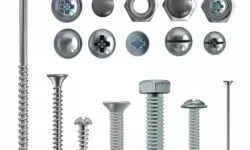
SCREW: Definition, Examples, Types and Sizes For Wood
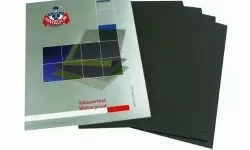
SANDPAPER GRIT: For Metal, Drywall and Wood

LABORATORY EQUIPMENT: Names and Functions
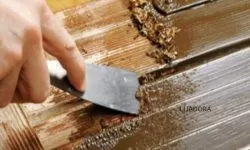
PAINT STRIPPER For Wood, Iron and Chemicals

WATER BASED VARNISH: Prices of Different Colors for Wood
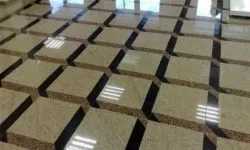
FLOORING AND TILES
Other Products of Interest in ALPHAPEDIA

RICE LAKE SCALE: Prices, Reviews and Offers
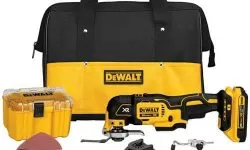
DEWALT ORBITAL SANDER: Great Price on Qualified Products

PRICE OF FLY SPRAY OR REPPELENT FOR DOGS
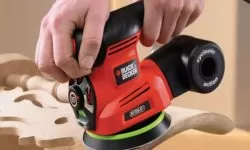
ORBITAL BLACK AND DECKER SANDER: Great Price on Qualified Products
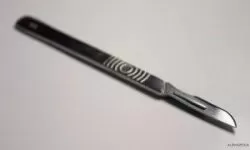
DIAMOND KNIFE PRICE. Reviews and Offers
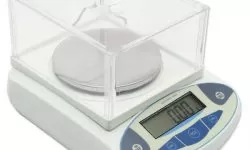
LABORATORY BALANCE: Definition, Use and Parts
Other Topics of Interest in ALPHAPEDIA

FREE TYPING COURSE

FREE CHESS COURSE

FREE COURSE OF AESTHETIC EQUIPMENT – APPARATOLOGY

FREE BACHELOR DEGREE IN INTERIOR DESIGN

FREE DRONE PILOT COURSE

FREE INSTAGRAM FOR BUSINESS COURSE
Image of Drill Bit
